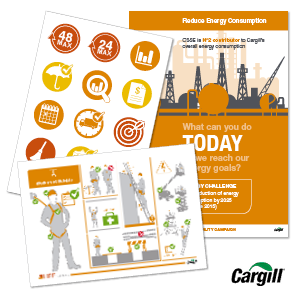

Rather than introducing new safety programs, Cargill continues to enhance our foundational safety programming through our LIFE (Life-altering Injury and Fatality Elimination) program. Ideas for Adapting Your Business Through COVID-19 | Cargill.Supporting our communities through COVID-19 | Cocoa and Chocolate.Farming, Animal Production and COVID-19 | Feeding Intelligence.Cargill's Response to the COVID-19 Global Pandemic.Read more about our COVID-19 response efforts, including highlights of some of our community outreach efforts around the world. These collective efforts have ensured that Cargill is a reliable supplier for our customers, even in these incredibly difficult circumstances. But, our teams have persevered and because of their efforts and our safety parameters, screening and cleaning measures, health care benefits and employee resources, we’ve faced minimal disruptions in our production. When it hurts one of us, it impacts all of us. Still, we have not been immune from the pandemic. In partnership with health experts, we are continually evolving our health and safety protocols to ensure they are aligned with Centers for Disease Control & Prevention and other leading health organization guidance. This includes several rigorous prevention elements such as employee health screenings, sourcing of personal protective equipment and masks, social distancing workstation layouts, return to office protocols, and so on. Cargill also actively promotes vaccinations among employees and where appropriate works to help gain access to vaccines for employees around the world. Following early warning signals, our Health & Safety team activated and deployed our global Health Emergency Planning and Response program. **SIF Rate = (SIF + SIF Potential incidents) x 200,000 / Hours ReportedĬargill’s long-standing commitment to safety and core value of putting people first has been foundational to our response to the global COVID-19 pandemic.


This metric at Cargill includes all injuries, not just those that result in lost workdays. Occupational Safety and Health Administration, the Reportable Injury Frequency Rate measures total recordable injuries per 200,000 hours worked. Serious Injury and Fatality (SIF) Rate** =. Reportable Injury Frequency Rate (RIFR)* = 1.17 Yet safety is a journey and one that calls for continuous focus, dedication and commitment. In fact, many of our traditional metrics are the best they’ve ever been. To ensure a safe and healthy workplace, we continue building on foundational programs that have, over the past several years, contributed to significant improvements in our overall safety results. Nothing matters more than the safety and wellbeing of our people.


 0 kommentar(er)
0 kommentar(er)
